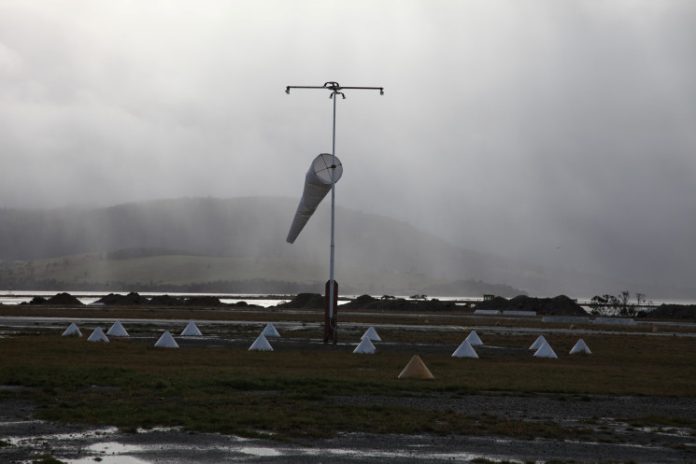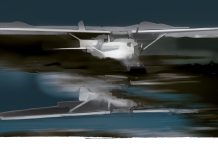As Australia continues to be battered by bouts of extreme weather, visual flight rules (VFR) pilots are being exhorted to avoid ‘get-there-itis’
The eternal question of ‘to fly or not to fly’ has been a constant dilemma in a summer of astounding conditions and, therefore, aviation veteran Shelley Ross is cautioning pilots not to succumb to hubris or pressure.
‘So many pilots start their flight on a steadfast mission to get to their destination,’ the flight instructor and editor of flyingtheoutback.com.au says.
‘The social or passenger pressure of getting there can often override their usually careful decision-making process.
‘In comes a hearty dose of ill-founded optimism, all eyes on the destination. They will plough on through bad weather, or imminent bad weather, hoping it’s going to improve any moment now.’
Ross says the wiser move is to err on the side of caution.
She notes that it’s far better to be on the ground wishing you were in the air, than the other way round.
‘If in doubt, never press on into weather that looks dodgy,’ she says. ‘There’s always tomorrow.’
But what about weather that may be unsettled but doesn’t obviously prohibit a take-off?
Ross looks at a variety of factors including where the weather is coming from, alternative tracks as well as information from the Bureau of Meteorology (BoM) and weather apps.
If the weather is coming in from the west and she needs to go south, she considers whether she can get there by heading a little further east of her original track.
She looks at avoiding areas where there is high terrain and low cloud and may consider changing the timing of her flight to avoid the weather.
‘But there will certainly be days when you’ve got to accept you’re just not going to fly today,’ she says. ‘You’re going to have a coffee, relax and congratulate yourself on a great decision.’
Ross says she has no problem in marginal cases with heading out to test conditions but says pilots who do that need to have a back door in case the weather deteriorates.
Anyone who finds they don’t have 5,000 metres visibility needs to divert or head home before they lose visual meteorological conditions (VMC).
And they need to do it as soon as they see the horizon is compromised.
‘So that backdoor is vital,’ she says.
One plus these days, Ross believes, is that weather forecasts from the BoM are more reliable, although she notes there is still an element of human judgement.
There are also ‘clever apps’, such as Windy, which take information from the BoM website and model cloud heights over time as well as the potential for wind and rain.
‘We tell our students first and foremost to look at the graphical area forecast (GAF), look at the grid-point wind and temperature (GPWT) and look at their terminal area forecasts (TAFs),’ she says.
‘They need to combine all that information to form a picture in their own mind of whether this is going to be a viable flight today.’
TAFs are useful in terms of deciding whether it’s safe to fly to a destination.
Ross says the BoM is good at adding information to the terminal forecasts throughout the day and pilots need to look out for INTERs (half-hour deteriorating weather events) and TEMPOs (hour-long events).
‘So, if you’re expecting to land in Hobart and you see TEMPOs everywhere, you’d be reconsidering going or you’d be making sure you had enough fuel so that you could stay in VMC to wait out that weather event,’ she says.
‘The more lines in a terminal area forecast, the more your caution bells should go off. Do you really have to go there today?’
Experience counts and Ross says pilots build up experience with handling weather and knowing when to fly.
However, for those who are relatively new to flying in uncertain conditions, she recommends using local landmarks to familiarise themselves with what 5,000 metres looks like.
She says students undertaking navigation exercises can also get exposure to marginal conditions in a safe environment with a suitably qualified instructor.
‘They have to do half a dozen navs before they get their licence and you can guarantee that not all those navs are going to present blue skies,’ she says.
‘I would encourage students to ask a million questions while they’re on those navs. Should I be worried about that cloud bank over there? Why is the sky darker over here? What’s with that shady stuff under that cloud that seems to stop halfway down?’
*CASA runs free AvSafety seminars throughout the year online and in locations around the country to allow industry to interact, discuss local issues and ask questions.
AviationWorx e-learning modules are available through the myCASA portal.





Better weather forecasts or even current weather and trends would be a great way to reduce the number of weather related accidents. The technology now exists to present excellent wx visualisations but we still have to use text based information. Weather cams are an improvement though (but even those are partially, privately funded).
Best advice I was given – when in doubt “don’t” VFR